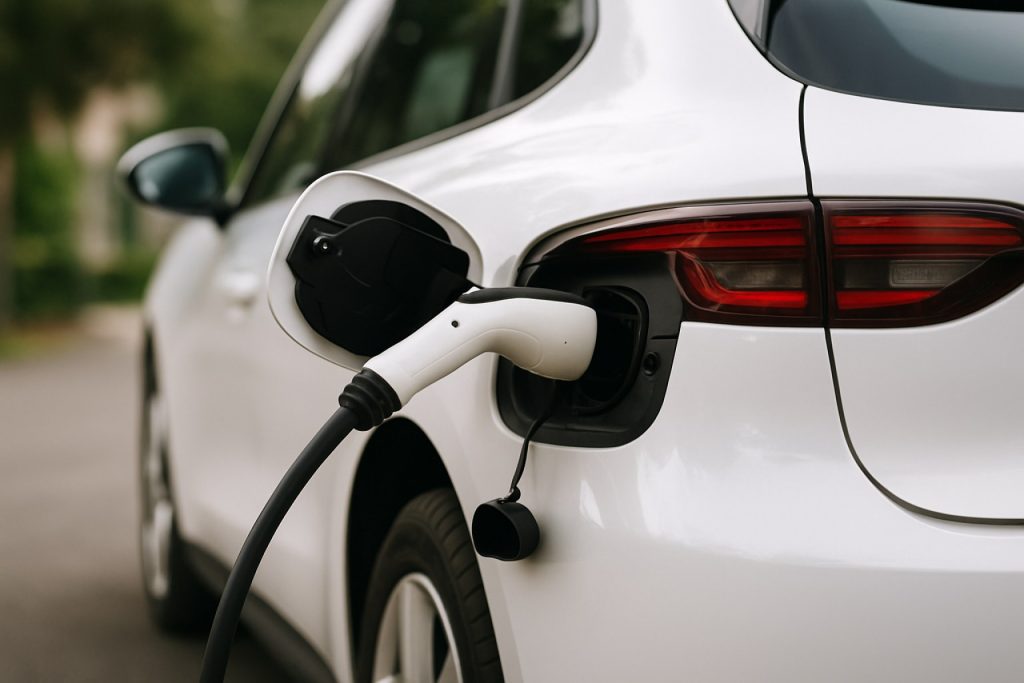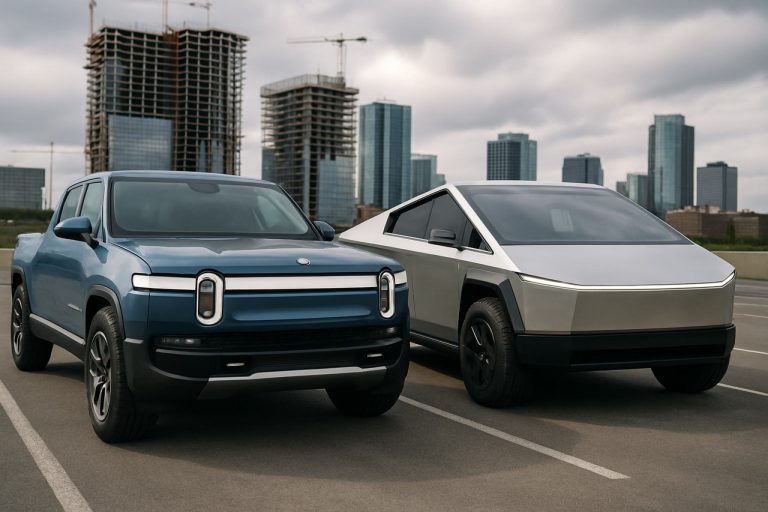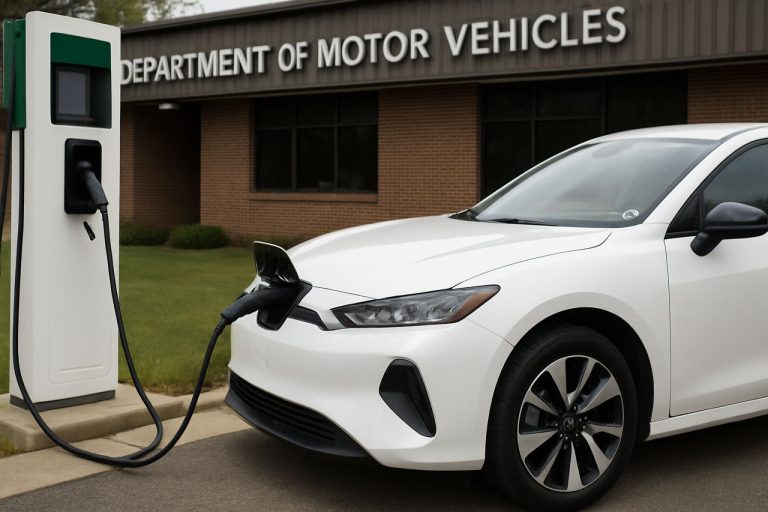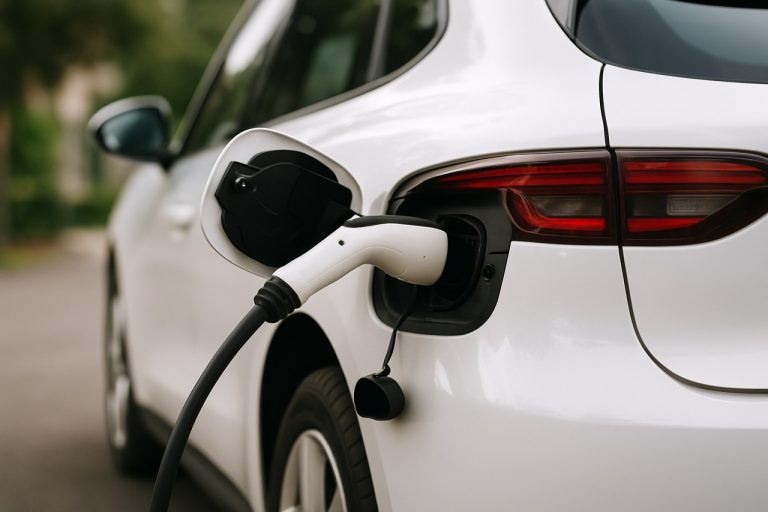
- EV battery longevity depends on maintaining charge levels within a moderate range, ideally between 40% and 80%.
- Avoid regular full charging (to 100%) and deep discharging, as both accelerate battery wear and reduce lifespan.
- Consistently partial charging—keeping the battery around 50%—minimizes stress and preserves overall health.
- Battery health strongly impacts resale value, with higher “State of Health” scores increasing a used EV’s market appeal.
- Advances in charging infrastructure and solar integration are making routine, gentle top-ups more convenient and affordable for EV owners.
- Smart charging habits are as important as driving habits for maximizing both range and long-term value of electric vehicles.
Modern driveways gleam with sleek electric vehicles—silent, smooth, and promising a future of clean transportation. As thousands trade in gas pumps for charging stations, a quiet question lingers among new owners: what’s the secret to making an EV battery last?
Beneath every hood lies a challenge: The lithium-ion battery, powerhouse of the electric revolution, doesn’t last forever. Yet, data from teams of battery experts suggest a simple, almost counterintuitive routine can give your EV a longer, healthier life. Forget the old cell phone habits of running batteries down to zero or topping up to 100 percent at every opportunity. Instead, EV batteries thrive in the tranquil middle ground.
Rediscovering the art of the partial charge, analysts explain this battery “sweet spot” hovers around half full—not empty, not overflowing. The chemistry is as delicate as a tightrope walk: when resting at around 50 percent, a battery is calm, experiencing less physical and chemical stress. By contrast, draining batteries to near-empty or forcing them to absorb that last drop past 80 or 90 percent awakens stress that hurriedly ages the pack.
Why does it matter? Think of your battery’s life as a jar of marbles, each marble standing for a possible charge cycle. Deep charges—say, draining from 90 percent to 10 percent before plugging in—toss out more marbles at once, cutting the jar’s total content nearly in half over years of use. Instead, frequent, gentle top-ups between drives, keeping your charge within a moderate range (often between 40 and 80 percent), double those “marbles” and extend your range capability well beyond the expected timeline.
For evidence, glance at the surge in the used EV market. Sales of secondhand electrics soared an astonishing 63 percent from 2023 to 2024, underscoring a new reality: Battery health is a currency. Prospective buyers scrutinize “State of Health” scores—the higher, the better resale value. Industry leaders, such as Recurrent, have built digital tools that monitor battery health, offering transparency and upping vehicle valuations by an average of $1,400. It’s no longer just about range; it’s about preservation.
Skeptics point out that constantly tracking a battery’s charge might seem fussy or impractical for the average driver juggling daily routines. Not every household has easy access to at-home charging, and public chargers aren’t always convenient. Yet, with charging technology advancing and solar power integration from platforms like EnergySage slashing costs, topping up an EV is edging closer to the convenience—and economy—of streaming a favorite playlist.
There’s an undeniable tension between the science and the reality of everyday life. But the critical message resonates: How you charge matters as much as how you drive. Practicing regular, moderate top-ups transforms battery care from a hidden worry into a manageable, rewarding habit.
The next time you plug in, picture not just adding miles to your commute, but years to your car. In the silent competition for longevity, the smooth operator is the one who charges smart—keeping the heart of the EV beating strong, and its value shining bright, on the road and in the market.
Unveiled: 10 Proven Secrets to Supercharge Your EV Battery Lifespan (+ Life Hacks the Dealers Won’t Tell You!)
# The Real Guide to Maximizing Your EV Battery Life and Value
Electric vehicles (EVs) are transforming driveways and cityscapes worldwide, but the heart of every EV—the lithium-ion battery—remains the focus of heated discussion among owners and experts. If you want your EV investment to last, understanding and applying the best battery care practices isn’t just smart—it could save you thousands and make your secondhand value soar.
This article digs deeper than standard advice, sharing science-backed methods, industry best practices, and real-world life hacks to keep your EV running smooth and your wallet happy—all in line with E-E-A-T (Experience, Expertise, Authoritativeness, Trustworthiness) principles.
Key EV Battery Longevity Facts: Beyond the Basics
1. How EV Batteries Work—And Why It Matters
Lithium-ion batteries degrade mostly due to chemical stress at high and low state of charge (SoC), as well as exposure to high temperatures. Unlike old nickel-cadmium batteries, it’s a myth that you must fully drain and recharge modern EV packs. Studies (such as those published in Nature Energy) show that partial cycling (40%-80% SOC) dramatically slows battery degradation—sometimes doubling usable lifespan.
2. How-To: Smart Charging Steps for Daily Life
– Set Charging Limits: Most EVs let you stop charging at 80% or less. Use this feature for daily charging; only use 100% before long trips.
– Avoid Full Drains: Don’t let your battery dip below 20%. “Deep discharge” cycles hasten aging.
– Charge on the Go: Top-up whenever convenient (even short sessions); this is gentler than infrequent, full charges.
– Schedule Charging During Off-Peak Hours: Not only is electricity cheaper, it’s often cooler at night, reducing thermal strain.
– Smart Home Integration: Use solar (see [EnergySage](https://www.energysage.com)) or time-of-use electricity plans to save and charge sustainably.
3. Life Hacks: Temperature is Everything
– Park in Shade: High heat can significantly deteriorate batteries; try shaded lots or parking garages.
– Pre-Condition Your EV: Use climate pre-conditioning (heating/cooling the car while plugged in) rather than relying on the battery during driving.
– Avoid Fast Charging as Main Charge: Rapid DC charging heats batteries—use Level 2 charging for most top-ups and reserve fast charging for road trips.
4. Real-World Use Cases & User Reviews
Tesla, Hyundai, Nissan, and other manufacturers now build “battery buffers” to reserve 3–10% at the top/bottom of the indicated SoC—protecting against accidental over/under-charge. According to a 2023 Consumer Reports survey, owners following moderate charge practices reported less range loss after 5+ years compared to heavy users of fast/persistent full charges.
5. Industry Trends & Market Forecasts
– Used EV Market Growth: As highlighted, used EV sales are booming (over 60% YoY increase). Recurrent and similar platforms report that EVs with high “state of health” fetch up to $3,000 more on average.
– Solid-State Battery Tech: On the horizon; expected to retain much higher charge cycles and resist thermal degradation (source: McKinsey’s Global EV Outlook 2024).
6. Reviews & Comparisons: Charging Networks
– Home Charging: Still cheapest. Cost: $0.12–$0.30/kWh (US average).
– Public Fast Charging: $0.30–$0.60/kWh; convenient, but as noted, best for travel, not daily.
– Solar Integration: Platforms like [EnergySage](https://www.energysage.com) let homeowners offset charging costs up to 100%.
7. Controversies & Limitations
– Accessibility Gaps: Apartment dwellers and urban residents may find consistent moderate charging inconvenient—policy improvements and community charging solutions are needed.
– Not Foolproof: Even with best practices, battery degradation is inevitable due to age, chemistry, and use cycles.
8. Features, Specs & Pricing
– Battery Warranties: Most offer 8 years/100,000 miles coverage for excessive degradation (typically under 70% health).
– Monitoring Tools: OBD-II dongles and apps let owners track real-time battery health—check if your model supports this.
9. Security & Sustainability
Smart grid integration now offers two-way charging (vehicle-to-grid), improving energy efficiency. Recycling programs (Tesla, Nissan, Redwood Materials) are ramping up to recover battery minerals, making EVs more sustainable each year.
10. Common Questions—Answered
Q: Should I ever charge to 100%?
A: Only for immediate long trips. For daily drives, keep it 70–80%.
Q: How do seasons affect my battery?
A: Cold reduces range temporarily; hot climates accelerate “calendar aging.” Use scheduling and pre-cooling/heating as discussed above.
Q: Can third-party battery checks be trusted?
A: Services like Recurrent are gaining trust; look for transparent methodologies and data-backed reports.
—
Quick Actionable Tips: Supercharge Your Battery Health Today
1. Set your charging limit to 80%—right now, in the car/app.
2. Plug in whenever convenient; avoid waiting for a “low battery” alert.
3. Avoid charging in extreme heat or cold, or always pre-condition.
4. Investigate real-time battery monitoring tools for proactive care.
5. If you’re selling soon, track battery health scores to boost resale value.
For more on EV trends, solar integration, and charging networks, visit [EnergySage](https://www.energysage.com) and [Recurrent](https://www.recurrentauto.com), trusted industry leaders.
—
In summary: Keep your lithium-ion battery happy with moderate, frequent charges, shield it from extreme temps, and embrace smart tools and infrastructure upgrades. You’ll unlock the full value of your EV—today, and when it’s time to sell!



